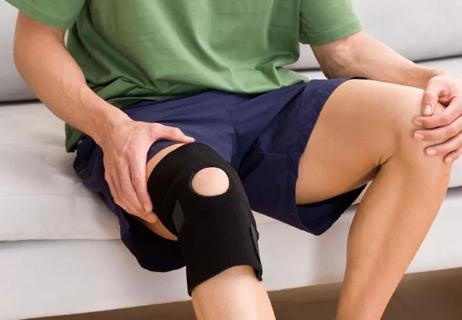Find the answers to some of these common questions

Cortisone shots are injections your doctor can use to relieve your joint pain from arthritis. These injections work by reducing the inflammation in and around your joint and are among the most effective methods of pain relief if you have arthritis.
Advertisement
Cleveland Clinic is a non-profit academic medical center. Advertising on our site helps support our mission. We do not endorse non-Cleveland Clinic products or services. Policy
These injections most commonly contain a corticosteroid and anesthetic. Your doctor can usually give them in their office. We asked orthopaedic surgeon Michael Star, MD, to answer key questions about these treatments.
A: We use them most often for knee and shoulder pain, but cortisone injections can be used in any joint in the body, from small joints in the hands and wrists to larger ones such as your knees or hips.
A: Treating joint pain usually involves multiple approaches. Depending on what condition is causing the pain, we try to find other long-term pain relief solutions through physical therapy, bracing, other medications or, in many cases, joint replacement.
A: It’s possible to give ongoing injections, as long as they are helpful. But we try to limit the injection to one every three to four months for any single joint. Because side effects are possible, we like to limit it to a total of six injections a year anywhere in the body.
Care should be taken if you have underlying conditions, such as diabetes, as injections may affect your blood sugar. You should discuss with your physician.
A: The shots usually don’t work immediately. It may take up to seven days for the cortisone to take effect.
Advertisement
A: Yes, it’s possible to inject different parts of the body at the same time, but we have to look at the overall amount of cortisone we’re injecting. I do two different body parts, sometimes on the same visit, and I can adjust the dose of cortisone accordingly to limit the risks. Often, I’ll do a lower dose if we’re treating multiple body parts.
Risks of cortisone injections include:
Your doctor can discuss your specific risks.
A: I sometimes use artificial joint fluid injections, or what some people call “gel” injections. It’s also known as hyaluronic acid. Those are a very good alternative treatment for knee arthritis that’s not severe enough for a knee replacement, and if you’re not responding adequately to cortisone. Please remember these injections are approved only in your knees.
A: Usually there isn’t any joint damage from the cortisone, but some studies have shown that it can cause damage in tendons and may predispose people to tendon rupture. Another study shows cortisone injections in knee joints can damage remaining cartilage within the knee.
This is why it’s important to diagnose and treat the underlying conditions which can lead to arthritis, such as obesity, malalignment, poor body mechanics and inflammatory/autoimmune disorders.
A: Every injection has a small risk of infection, so you need to keep the area where you receive the injection clean.
Also, you shouldn’t get the injection if you have any infection, especially in the same area to be injected. There is also a chance that there could be bacteria in your bloodstream that could get into the joints after the injection.
Remember, if you have any concerns or questions, it’s important to ask your doctor. They know your particular history and are the best person to help based on that history.
Advertisement
Learn more about our editorial process.
Advertisement

No one drug or therapy alone is effective — but a comprehensive approach can ease symptoms

Adding these simple foods to your diet can make a big difference

Traditional Chinese medicine technique recommended for chronic pain

The Short Answer from an orthopaedic surgeon

Most recommended precautions center around minimizing bruising or swelling

Even one drink can have an impact on your cognitive function leading to slurred speech, blurred vision and impaired memory

Type 2 diabetes isn’t inevitable with these dietary changes

Applying a hot or cold compress can help with pain